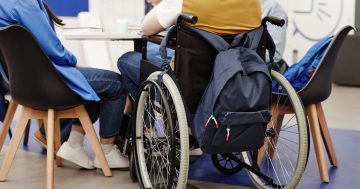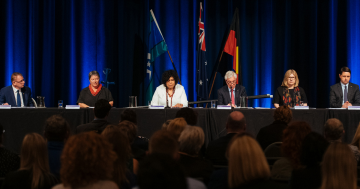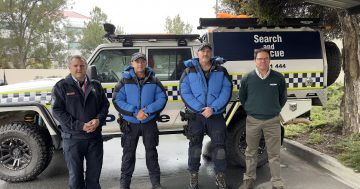
Resilience Crusader Emily Karabatic says the Flagstaff toolkit is a step towards greater awareness. Photo: Flagstaff Group.
Speed and communication are of the essence in most emergencies. But what if one or neither is an option?
One Illawarra not-for-profit social enterprise for people with disabilities is tackling this frightening reality.
Flagstaff Group has created the award-winning toolkit EMBER to help people with disability, first responders, families, carers and the public to respond effectively in emergencies involving those with disability.
Flagstaff executive manager of Strategy and Growth, Alison Turner says the toolkit seeks to address a glaring gap in emergency care – one it learned about the hard way.
“During a fire in Shoalhaven we had a truck driver and offsider with disability stuck on the highway in Ulladulla, unable to get home. As an organisation we were unprepared,” she says.
“Afterwards, we looked for resources to help inform us as to what we could and should have done, and couldn’t find anything. So we decided to make something.”
Developed after engaging with people with disability, carers, emergency personnel, disability providers and the community, EMBER includes planning apps.
It details equipment that various people with disability might need in emergencies, emergency contact lists, advice on establishing support networks, and how to have essentials such as medication and important documents at the ready.
The toolkit also encompasses Flagstaff’s “Street Mate” campaign to start conversations about how to help neighbours with disability in an emergency.
The online learning materials have been designed mainly for volunteer and emergency crews, but Alison says everyone should take a look.
“In the process of creating the toolkit, we discovered a lot of first responders and emergency workers didn’t know key things about effectively helping people with disability in emergencies,” she says.
“In the heat of the moment they talk quickly, they move quickly, and they might yell ‘hurry up!’, not knowing that person physically cannot hurry up.
“Or they might not realise some people with disability and certain cultural groups are actually quite fearful of people in uniforms. But these are useful tools for all bystanders.”

Flagstaff executive manager for Strategy and Growth Alison Turner spreads the word about the EMBER program. Photo: Flagstaff Group.
Other resources include podcasts for emergency personnel and families, downloadable plans, a ChatGPT chatbot full of advice, booklets for disability providers, and even a Spotify “Ember Mood Music” channel designed to calm people down in emergencies.
The toolkit has already resulted in various organisations using practical measures, including “sensory kits” in evacuation centres for people with autism spectrum disorder or sensory issues and communication boards to help emergency response teams work with non-verbal people.
“There’s so much that’s just not on our radar when it comes to the needs of people with disability in emergencies,” Alison says. “For instance, a blender is not something most people would consider an emergency item – but for people who can only eat pureed food, it certainly is.”
Emily Karabatic, who lives with cerebral palsy and epilepsy, is one of Flagstaff’s Resilience Crusaders, helping to break down communication barriers between people with disabilities and emergency personnel.
She says the EMBER toolkit is a welcome step towards raising awareness – not just for emergency personnel and people with disabilities but the general public.
“An emergency can hit any time, any place, and you might be surrounded by strangers. It’s good to know some of them might know how to help people with disability navigate that,” she says.
“I have, fortunately, never been in an emergency situation. But if and when I am, I now know the people around me at work and home who can help and the differences between the various emergency services personnel.
“I have a checklist of things to do in preparation for emergency and the event of … I know to leave early because when they say on TV it’s time to evacuate, that’s often too late for a person with disability.”
Emily says bear in mind two points when approaching a person with disability in an emergency.
“Please be calm in front of us. Everyone gets anxious in those situations, but there can be additional stressors for people with disabilities,” she says. “And if you think someone might need help, but you’re unsure, ask them because sometimes they won’t.”
For more information, visit Flagstaff Group.
Original Article published by Dione David on Region Illawarra.





















